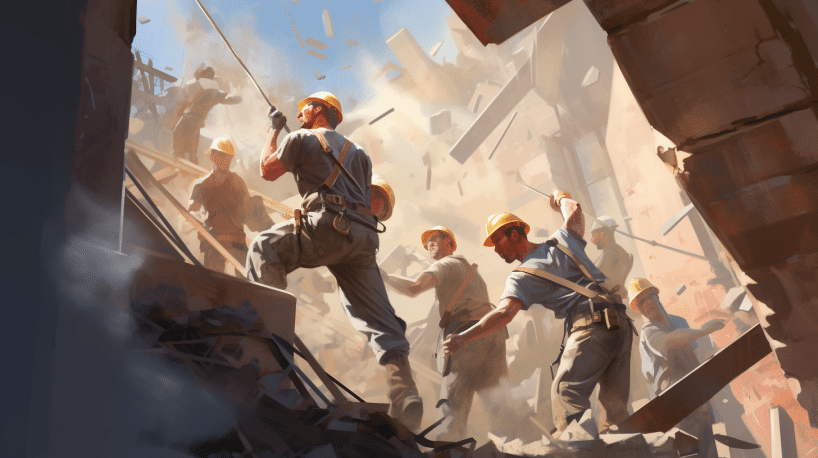A new report from the CDC provides insight into suicide rates among different industries and occupations in the United States.
The key takeaways:
- Suicide rates have increased 40% from 2000 to 2017 among working-age adults (ages 16-64).
- Men who work in the mining, construction, and other manual labor jobs have the highest suicide rates.
- Women in protective service and healthcare support roles also have elevated suicide rates.
- Even within broad occupational groups, rates can vary greatly depending on the specific job.
With nearly 38,000 working-age Americans dying by suicide in 2017, understanding patterns by industry and occupation can help target prevention efforts.
Source: Morbidity and Mortality Weekly Report (CDC), 2020 Jan 24.
Examining Suicide Rates by Industry and Occupation
The CDC analyzed industry and occupation data for nearly 21,000 suicide deaths in 2016 across 32 states.
They calculated suicide rates per 100,000 people for major industry and occupational categories, as well as specific jobs with at least 20 deaths.
Industries with Highest Suicide Rates Among Men
- Mining/Gas/Oil Extraction: 54 deaths per 100,000 workers
- Construction: 45 deaths per 100,000
- Other Services (e.g. automotive repair): 39 deaths per 100,000
- Agriculture/Forestry/Fishing/Hunting: 36 deaths per 100,000
The researchers posit that high-risk industries likely share factors like lower education, access to lethal means, and job stress.
Occupations with Highest Suicide Rates Among Men
- Construction and Extraction: 49 deaths per 100,000
- Installation/Maintenance/Repair: 37 deaths per 100,000
- Arts/Design/Entertainment/Sports/Media: 32 deaths per 100,000
- Transportation and Material Moving: 30 deaths per 100,000
Occupations with Highest Rates Among Women
- Protective Service (e.g. police, guards): 14 deaths per 100,000
- Healthcare Support (e.g. nursing assistants): 11 deaths per 100,000
Suicide Rates Vary Within Occupational Categories
Drilling down to specific occupations reveals a wide range in suicide rates even within broad categories:
- In Construction and Extraction, rates range from 35 deaths per 100,000 among Pipelayers to 79 per 100,000 among Structural Iron and Steel Workers.
- In Arts, Design, Entertainment, Sports, Media, rates are 33 deaths per 100,000 overall but 96 per 100,000 among Musicians and Singers specifically.
- Among Management occupations, the suicide rate is 18 deaths per 100,000 overall but 43 per 100,000 among Farmers and Agricultural Managers specifically.
Implications for Suicide Prevention

These findings highlight opportunities to focus suicide prevention efforts among the industries and occupations most affected. Strategies include:
- Promoting mental health and well-being programs in high-risk workplaces
- Training managers and coworkers to recognize warning signs
- Reducing access to lethal means
- Fostering social connectedness and support
But the data also make clear that suicide prevention is important across all occupations.
Strategies like facilitating mental health treatment, teaching coping and problem-solving skills, and responsibly reporting suicide news can protect workers everywhere.
Understanding Suicide Among Men in High-Risk Occupations
The CDC report echoes previous research finding higher suicide rates among men working in construction, mining, agriculture, and other manual labor jobs.
These masculine-typed industries share risk factors that may contribute to suicidal behavior.
Access to Lethal Means
Some high-risk occupations provide ready access to lethal means of suicide, including dangerous tools and equipment.
Research shows firearm access doubles suicide risk, while workplaces with heights or hazardous chemicals also increase risk.
Lower Socioeconomic Status
Manual labor jobs like mining, construction, and agriculture tend to offer lower wages, education levels, and prestige.
Low socioeconomic status is linked to higher rates of suicide and mental illness.
Financial stress related to job insecurity may also play a role.
Injury Risk and Chronic Pain
High-risk industries have elevated rates of workplace injuries.
Chronic pain from these injuries combined with physically demanding work may increase susceptibility to depression and suicide.
Social Isolation and Loneliness
Social isolation and loneliness are well-established risk factors for suicide.
Some male-dominated jobs like mining and farming involve working alone for long hours, which can lead to disconnection.
Barriers to Mental Health Treatment
Stigma around mental illness persists in many masculine workplace cultures.
Workers fear admitting vulnerability or distress, which prevents them from seeking help.
Addressing Suicide Among Healthcare and Protective Service Workers
On the other end of the spectrum, the CDC analysis also highlights elevated suicide rates among women in healthcare support and protective service occupations.
These findings warrant a closer look at contributing factors.
Healthcare Support Workers
Healthcare support roles like nursing assistants have the highest suicide rates among women.
Possible reasons include:
- Emotional and physical toll of patient care
- Lower wages despite difficult work
- Exposure to trauma and death
- Extension of caretaker role at home
Protective Service Workers
For women in protective service jobs like security guards or police officers, risks may include:
- Workplace violence and trauma
- Need to portray emotional strength
- Barriers to seeking mental healthcare due to stigma
- Access to lethal means like firearms
Preventing Suicide Among All Workers
Workplaces provide a crucial site for suicide prevention.
Strategies include training managers and employees, promoting mental health resources, reducing stigma around help-seeking, safely storing lethal means, and fostering social support.
But the climb in suicide rates across industries and occupations also highlights the need for comprehensive public health solutions.
Improving economic support programs, expanding mental healthcare access, teaching coping and problem-solving skills, and reporting responsibly on suicide can save lives across all workplaces.
References
- Study: Suicide Rates by Industry and Occupation – National Violent Death Reporting System, 32 States, 2016
- Authors: Cora Peterson et al. (2020)







